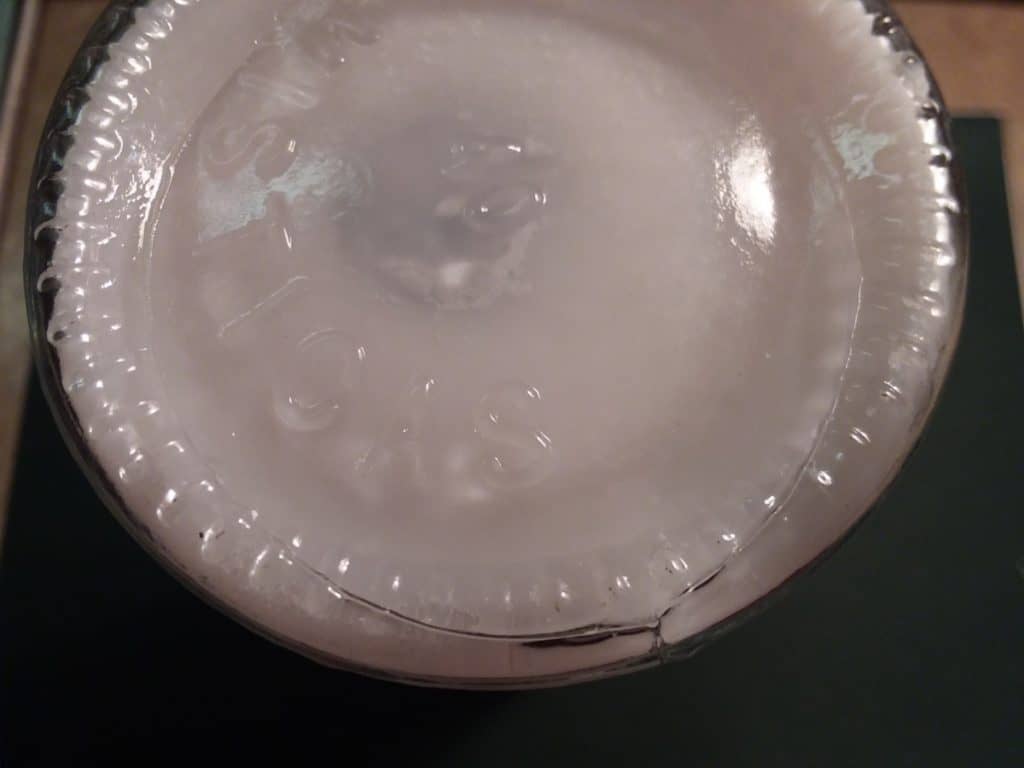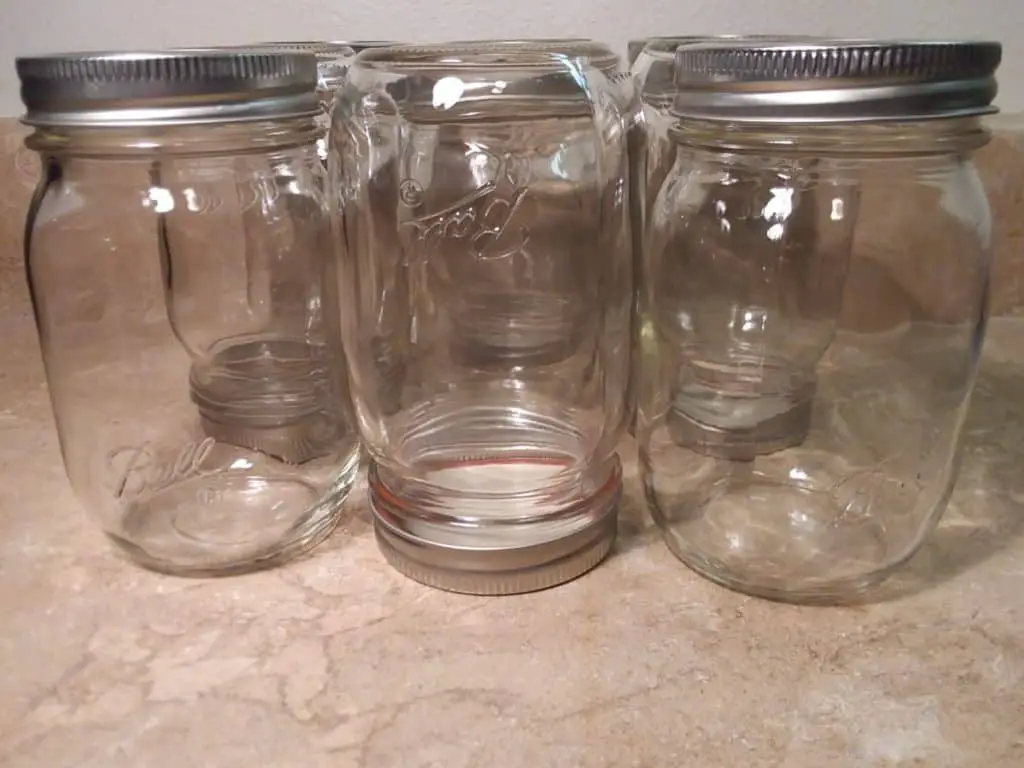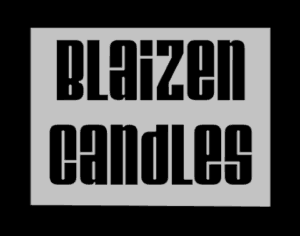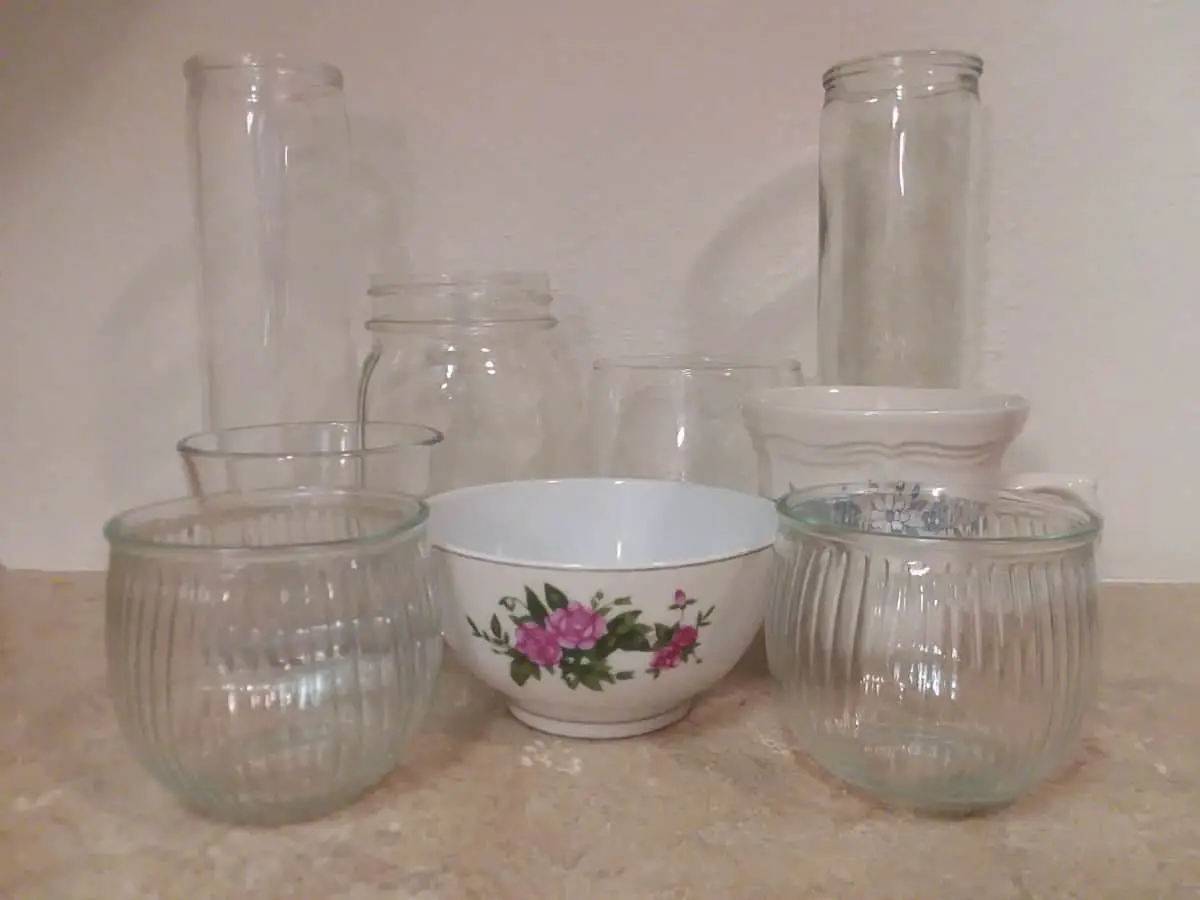Have you ever wondered if a glass candle could break? I have! Or maybe you have actually had it happen to you! And you want to know, “Why did my glass candle explode!?” I recently got into making my own candles and wanted to know if all glass is safe for candles. Here is what I found out about glass jars for candles and container safety.
Is all glass safe for candles? Some glass is not safe for candles, because it is not heat-resistant, can crack, or is porous. Glass that is safe for candles is heat-resistant, does not crack, and is not porous. A good example of a safe, glass container for making candles is pressure canning jars, which are designed to withstand high heat and hold wax well.
Glass container candles are very popular and many people do not realize the risks and safety issues that could arise from burning such an item. I did some research and found some examples of some really great containers for making homemade DIY candles and some examples of not-so-great glass candle containers, as well.
What kind of glass containers are safe for making/pouring candles?
As mentioned earlier, not all glass is safe for candles. Even some “candle-making” glass containers or “certified safe” jars could crack or explode under extenuating circumstances. Glass containers that are going to be used for making candles should have the following characteristics:
- Heat-resistant
- Not crack
- Not porous.
Safe glass containers for candles need to be thick enough to withstand the heat.
You don’t want the glass to break while pouring the wax or when burning the finished candle, so the glass should be heat-resistant and be able to withstand these temperature variances. Otherwise, you will get liquid wax all over your shiny countertop, beautiful wooden table, or whatever other surface was used to make or display your candle. Also, not to mention that shattering glass could cause a not-so-pleasant injury!
Important Note: Any glass jar or container can crack. Supervision is key.
Not being porous is another important characteristic of a good candle container. This may seem obvious to some people. Others may ask, “Is glass porous?” Normal glass is not porous. However, glass can become porous if it is etched or cleaned using an acidic and/or alkaline chemical.
Glass can be porous.
When I was researching and learning about this topic and came across this fact, it surprised me. I never thought or knew that glass could be porous or permeable. I guess I always assumed it was a solid block of material that was impenetrable, unless, of course, it cracked.
Many people believe “porous” means that water can get through or it leaks and would protest by saying, “Glass doesn’t leak!” However, the actual definition of porous refers to a substance that has small (can be microscopic) holes (or “pores,” hence its name) through which air or liquid can pass (also referred to as permeable or penetrable).
Mason Jars, used for canning, have all of these safe characteristics for candle making. Pressure canning jars are designed to withstand high heat, are thick enough to avoid cracking, and are not porous. Specifically, jars used for pressure canning, rather than water bath canning, are made to withstand temperatures of 250 degrees Fahrenheit!
Pressure canning jars are the best glass containers to use for candles.
Glass containers to avoid (that are not safe)

Here are some examples of glass and other containers to avoid for your candle-making projects:
Glass Vase. Can you put a candle in a glass vase? Sure, you could. But would I recommend it? Probably not. Glass vases, intended for water and real flowers, are not made to withstand high heat.
Old drinking glasses or mugs. These containers could crack, especially if they are old, because they are most likely porous. Depending on the type of glass or mug, they may not be heat-resistant, if they are not microwave-safe or dishwasher-safe.
Clay flower pots or other ceramic, porous containers. Ceramics made from clay or terra cotta are not suitable for candles. They actually absorb the wax and it is possible that it could catch fire. Also, the key word here again is porous.
Any container that can easily tip over. A container (glass or not) with an uneven or small bottom that could tip over or be easily bumped over is not safe! The wider or more round the base is, the sturdier it will be, which decreases the risk of getting knocked over.
Etched glasses. These are created with acidic substances and are generally porous and more likely to crack.
Glass cleaned with an alkaline substance. Alkaline cleaners break down the glass and cause it to become porous. Bleach (sodium hypocholorite), ammonia, cream cleaner, toothpaste, metal polish, oven cleaner, and baking powder are all alkaline chemicals. So, if you use any of these chemicals to clean the glass container, the glass could become porous and be more likely to crack.
Extenuating Circumstances: Causes of Candle Glass Jar or Container Explosions or Cracks and How to Prevent Glass Container Cracks or Explosions
So, what are the causes of glass candle explosions or cracks? And how do we prevent it from happening?
The situations/circumstances which would cause/create a glass jar explosion, or a glass candle container to break are listed below. I’ve included tips for how to prevent glass container cracks or explosions.
What causes glass to shatter or break is a big (extreme) difference in temperature changes in a short amount of time, basically temperature (thermal) shock.
- The first situation would be if the wick is not centered. If the wick is not centered, it will cause an uneven heat distribution on the sides of the container. The glass will become hotter on one side than the other, which may cause it to crack. To prevent a crack, make sure the wick is always centered.
- The second situation would be if the candle container/jar is not the same diameter along the length of the candle. For example, it has a wider mouth/top and a narrow bottom, or vice versa. When choosing a glass candle jar, it is important to consider the shape of the container. If it is not a completely straight column or even from top to bottom, the container can crack or break, because the smaller diameter section will be exposed to more heat and get hotter more quickly. To prevent a break, chose containers that have an even (equal) diameter across the length of the jar (cylinder that is even from top to bottom).
- Gel candles have been known to explode. Gel wax is a clear, transparent wax that has a rubbery texture. The wax is composed of 95% mineral oil and 5% polymer resin. Gel candles are made for aesthetic purposes and have an appealing visual quality. The wax itself actually heats up and therefore heats the entire container, as well. Gel candles are generally made in small, “pretty” containers that are usually thin and clear, such as wine glasses, martini glasses, etc., so you can see the gel. To prevent an explosion, use thicker glass, as mentioned earlier, and the appropriate wax type for the container.
Tip: Using low-melting waxes, such as paraffin, will prevent glass containers from exploding.
What other kind of containers can be used for making/pouring candles and factors to consider when choosing a container
Candle Container ideas. What can I put a candle in or burn a candle on? What are safe candle holders?
As mentioned earlier, pressure canning jars are the best glass containers to use for making candles due to their heat-resistant properties. You can check the current price of a dozen pint-sized jars here on Amazon.

If you are looking for a smaller container, Libbey has some good options, as well. You can find a 9.25 oz. case of 36 from EAP Innovations. They will offer you 10% off your purchase if you use my code BLAIZE10.
Tin jars are also acceptable and are designed/made for candle-making. You can find these at several arts/crafts supplies stores or on-line through candle-making companies. I found 2 dozen 8-oz. tins on Amazon that you can check out.
The main factor to consider when choosing your container is the type of wax you are using.
Knowing the pouring temperatures of the waxes you are working with is important! If you are pouring the wax at the wrong temperature (too hot!) it may crack the glass jar/container and create a mess!
The pouring temperature of soy wax is 120-140 °F. The pouring temperature of paraffin wax is 170-180 °F.
| Wax Type | Pouring Temperature (degrees Fahrenheit) |
| Soy Wax | 120-140 |
| Paraffin Wax | 170-180 |
If you’re looking for the exact manufacture recommended pouring temperatures of the specific wax you are working with, I wrote a comprehensive article all about candle wax basics that includes the pouring temperatures of the most commonly used waxes.
It may also be helpful to preheat the container to prevent thermal shock. However, do not dip the container in hot water to warm it. Use a heat gun, heat lamp, or other dry heat source.
Tip: Heat the container using a dry heat source, such as a heat lamp or heat gun, to prevent thermal shock and cracking.
Overall most of the time glass is safe. Only about one out of 1,000 canning jars will crack.
Also, make sure that whenever you are burning a candle, you are placing it on a heat-resistant surface.
If you would like more information about safe surfaces to burn candles on, I wrote a blog article about it.
My Candle Suppliers List
Of course, your best bet would be to order your glass candle containers from a reputable candle supplier to ensure they are intended for candle-making, heat-resistant, and safe to use.
I compiled a list of over 101 Candle Suppliers in the United States that you may find helpful in trying to find a glass vessel safe for candle-making.
Related Question
Can I recycle glass containers for candles or reuse glass candle holders? It would not be recommended to reuse glass containers for high-temperature melting waxes, such as beeswax. However, these containers would be more appropriate for use with low-melting point paraffin wax. Unless, the glass container was or is stated to be approved for high-temperatures.
Sign up for Notifications
Did you find this article helpful? Want to know when I post my next article? Sign up for my blog post notifications and I will email you when the next one goes live!



